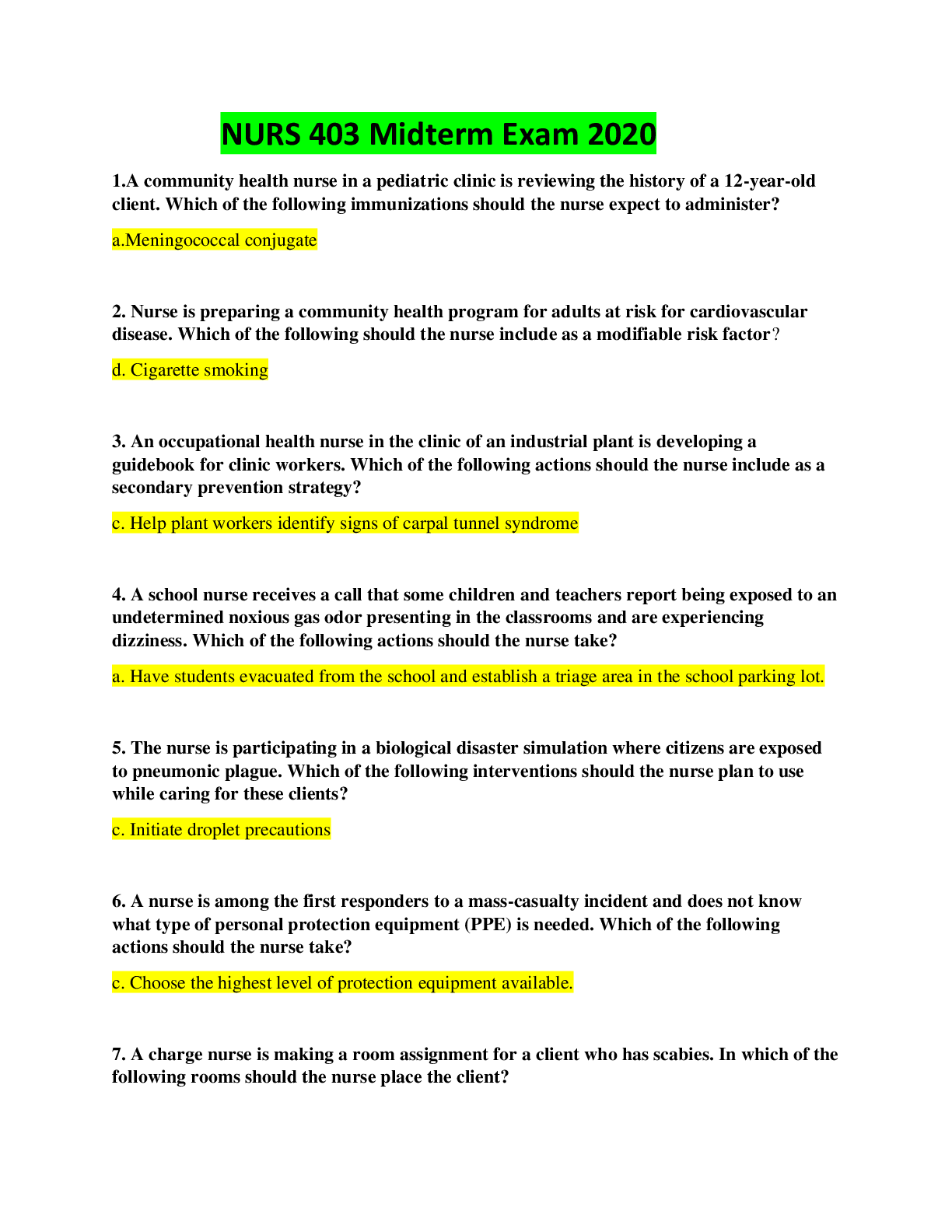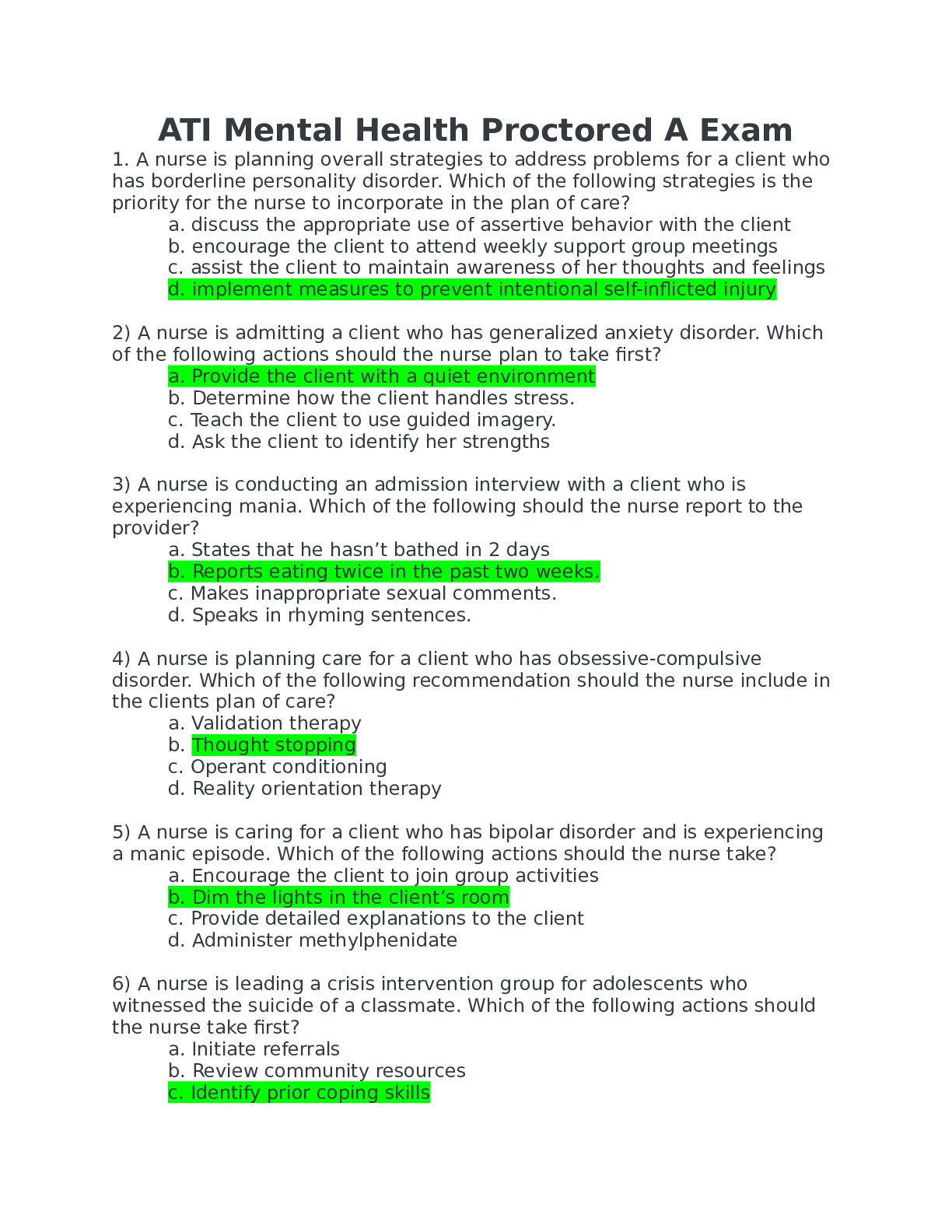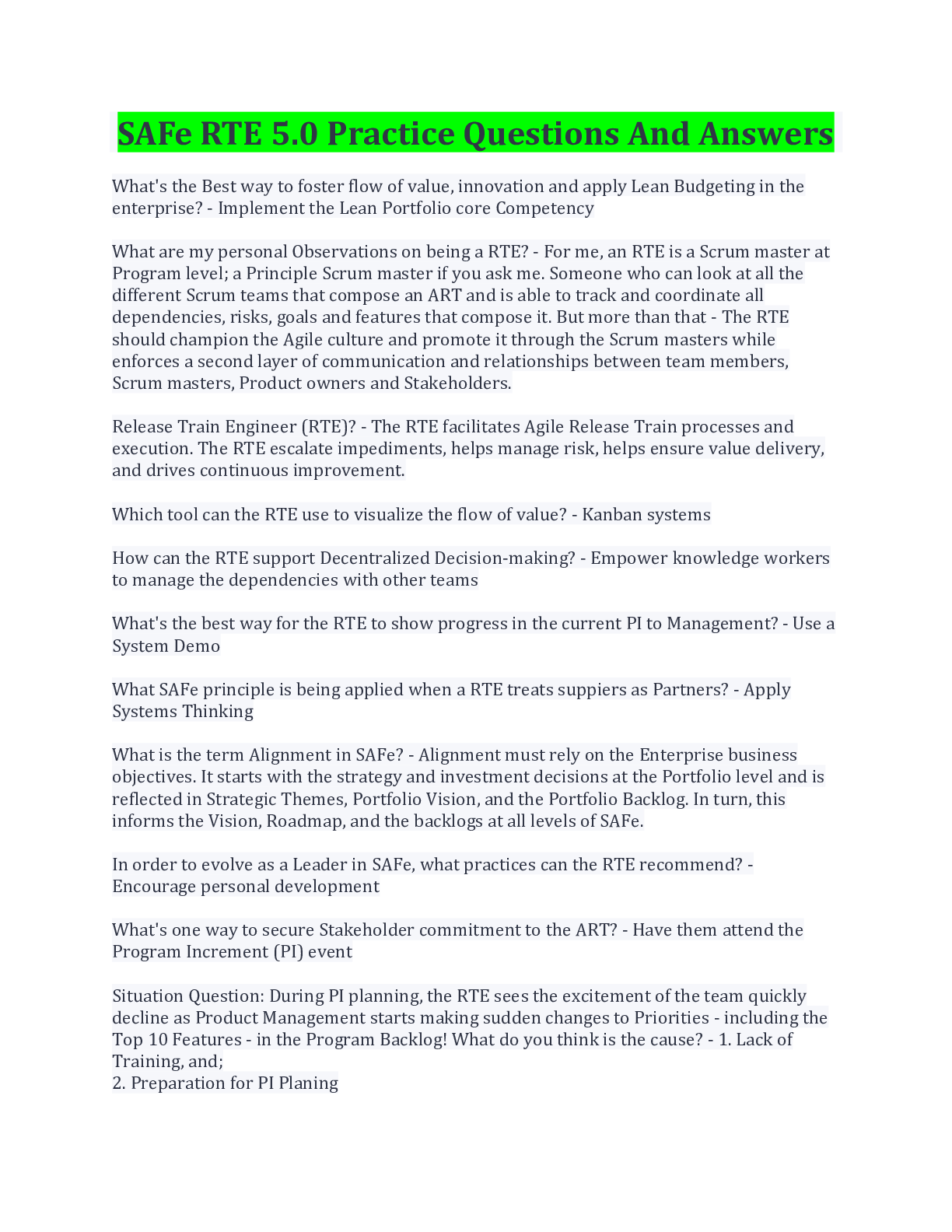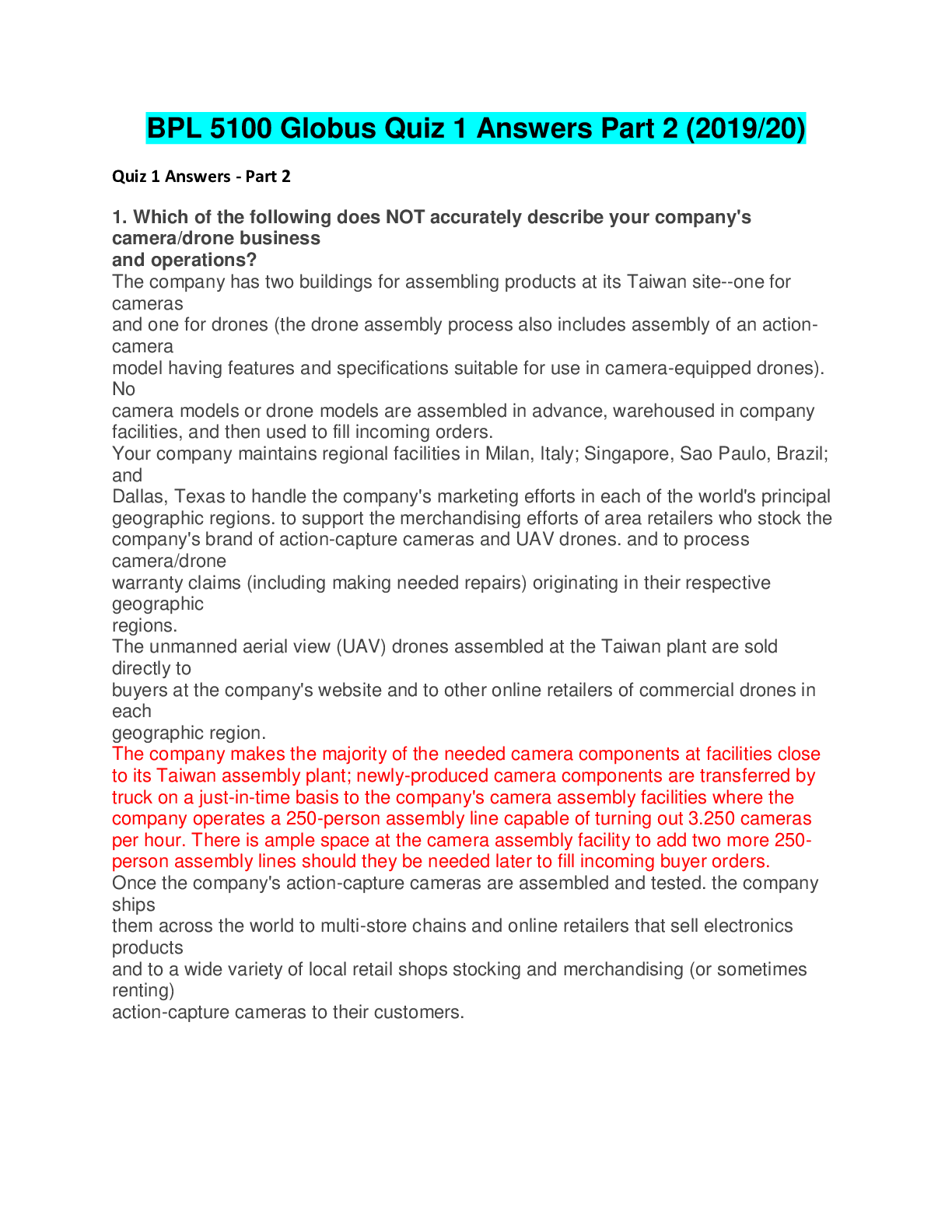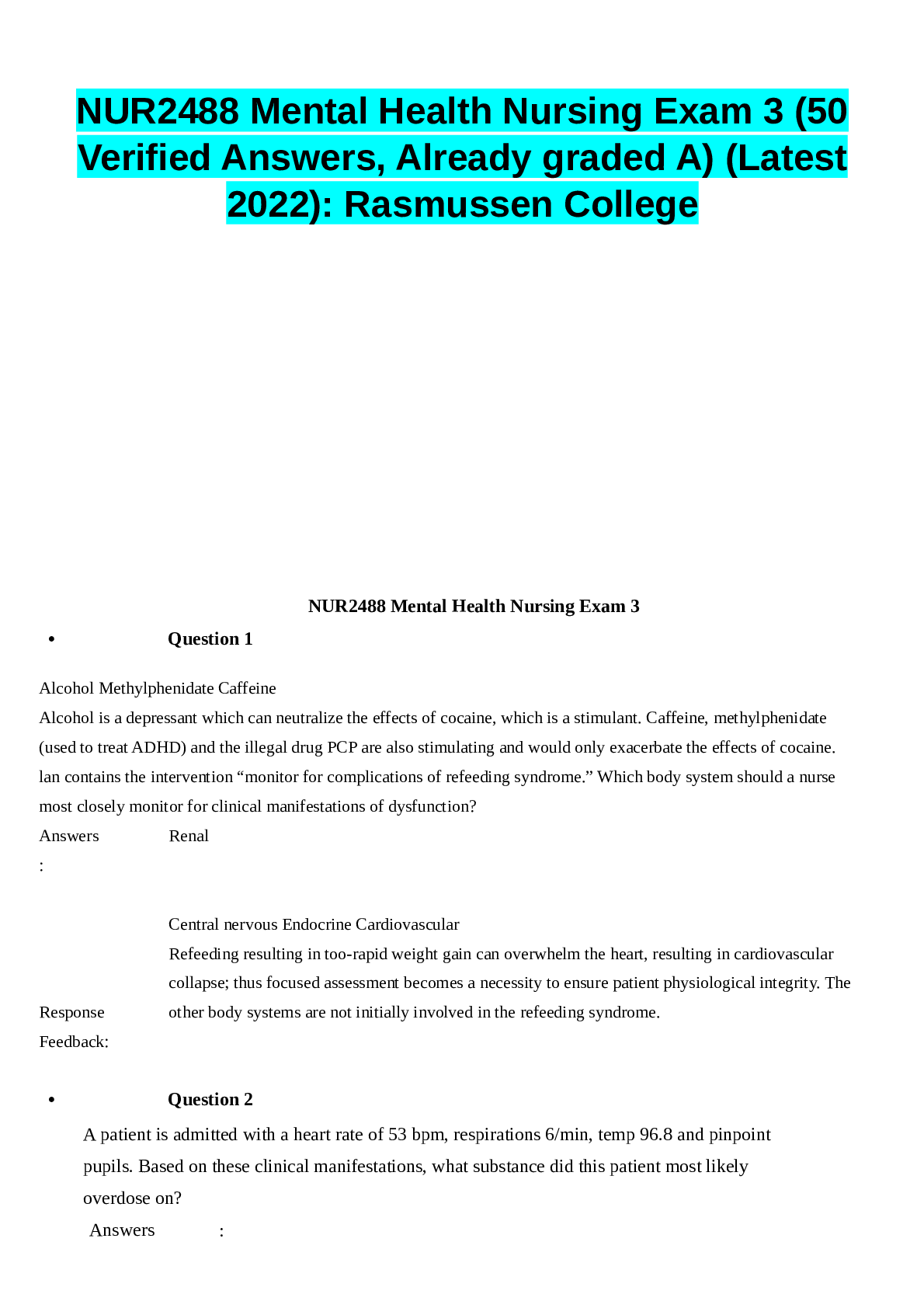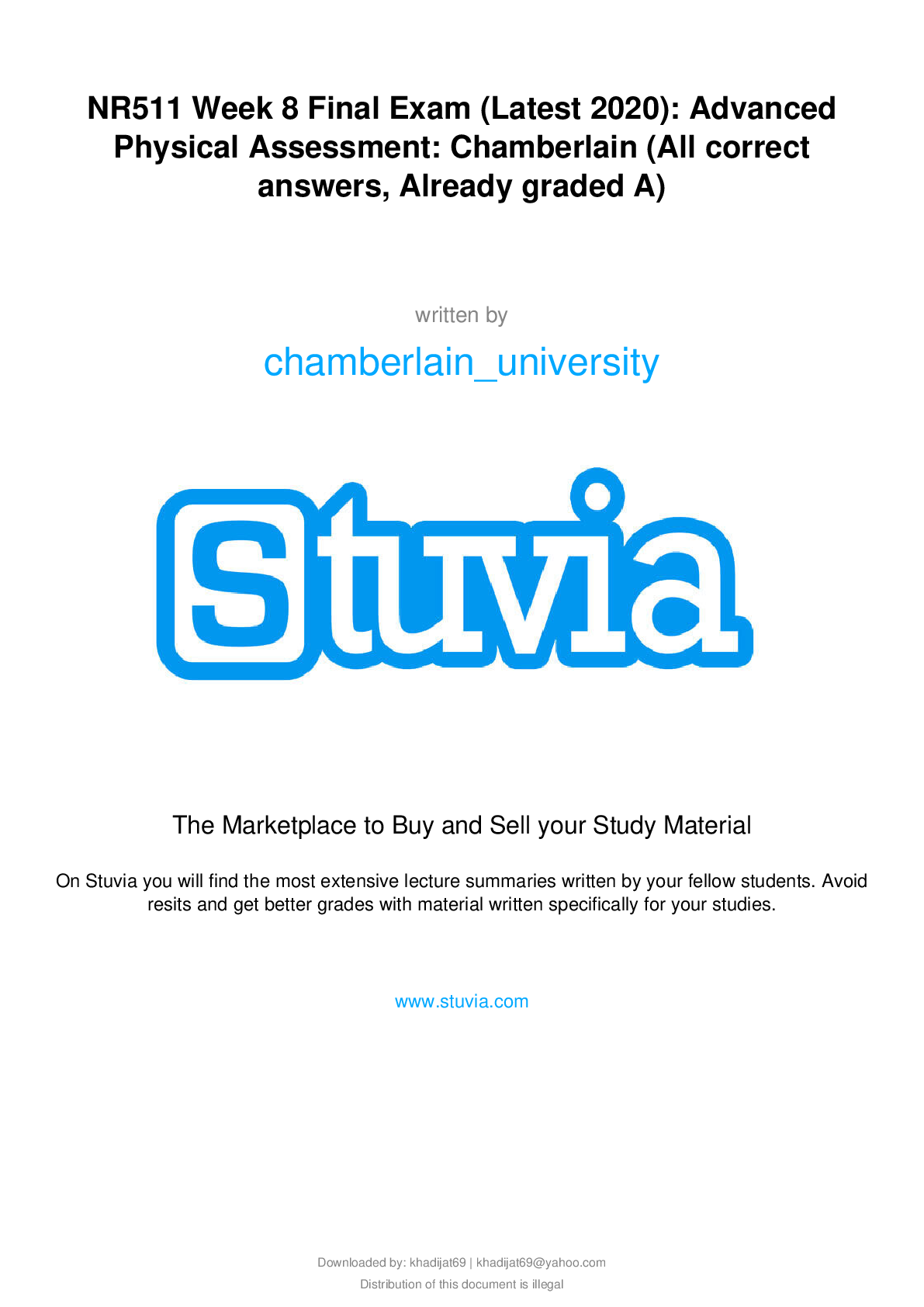*NURSING > EXAM > NUR 2790 Exam2 PN 3 |NUR 2790 Exam2 PN3 |Questions and Answers, Already Graded A. (All)
NUR 2790 Exam2 PN 3 |NUR 2790 Exam2 PN3 |Questions and Answers, Already Graded A.
Document Content and Description Below
A client who is being mechanically ventilated has positive end respiratory pressure (PEEP) set at 20 cm of water. Which of the following should the nurse assess for the client? Pneumothorax 2. A nu... rse is completing discharge teaching with a client who has a pacemaker. Which of the following statements by the client is correct? I will call my doctor about prolonged hiccups 3. In order to reduce afterload in a client with HTN and HF, the nurse will administer which IV medication? Nitroprusside 4. A client diagnosed with a-fib will most likely be placed on which two long term medications? Cardizem and anticoagulant 5. A client is complaining of dizziness and near syncope. The nurse’s assessment reveals the following: VS: B/P 80/40, HR: 36 RR: 12. Cardiac monitor shows this: strip. the nurse anticipates giving which one of the following medications? PAGE 674. Atropine 6. The nurse suspects a client is in left-sided HF when which of the following are assessed? Shortness of breath; rales, frothy sputum 7. A client is receiving an infusion of tissue plasminogen activator (t-PA). the client becomes disoriented to person, place, and time. What is the first action the nurse should take? INDICATOR FOR A MASSIVE MI Stop the infusion and call the provider 8. * Which of the following interventions are for a client diagnosed with a pneumothorax? SATA. Monitor respiratory and circulatory function, assess tracheal deviation, provide analgesics, insert chest tube 9. The nurse is caring for a client is caring for a client diagnosed with a STEMI. Select the interventions a nurse will expect to give. SATA. Oxygen Morphine Nitroglycerin Fibrinolytics 10. a client is getting weaned from the ventilator. Which setting will give partial support (continue to give ventilations and allow spontaneous breathing) and is used during the weaning process? SIMV 11. which lab value is most important to monitor for a client receiving a heparin infusion for tx of a PE? Activated partial thromboplasatin time 12. * a client in the critical care unit has an arterial line. The nurse is aware that an advantage to having an arterial line includes which one of following? Continuous BP monitoring 13. * respiratory distress caused by a wide spread inflammatory response, damaged alveoli, and decreased O2 saturations even with 100% is called? ARDS This study source was downloaded by 100000831157179 from CourseHero.com on 09-13-2021 10:15:11 GMT -05:00 https://www.coursehero.com/file/62893841/Exam2PN3docx/ This study resource was shared via CourseHero.com 14. * which of the following rhythms will require immediate application of an external pacemaker? Sinus brady with bp 70/30 15. a client with fluid volume excess will exhibit which of the following s/s? weak thready pulse 16. which of the following s/s and labs indicate a client has COPD? SATA Barrel chest Clubbing fingers Pursed-lip breathing 17. * Following a Motor vehicle collision, a client is diagnosed with a flail chest. The nurse will anticipate which interventions? SATA Endotracheal intubation Surgical Stabilization of flail segment Administration of humidified oxygen 18. * A client is admitted to the ICU with a flail chest and placed on mechanical ventilator. Breath sounds are clear bilaterally. The nurse should monitor which of the following? Pneumonia because the client is a high risk for acquiring an infection 19. Following a myocardial infarction, a client begins to feel lightheaded. The cardiac monitor shows a third-degree heart block. The nurse administers oxygen and anticipates which next treatment? Administer atropine intravenously 20. * When caring for a client with a head injury, the nurse suspects increased intracranial pressure when the vital signs indicate Cushing’s triad. Which vitals did the nurse observe? Widening pulse pressures, bradycardia and irregular respirations 21. * a nurse is assessing a client with DVT during the assessment the nurse will also assess for wotf side effects or complication of a DVT? Pulmonary embolism 22. The nurse is caring for a client with a blood pressure of 70/30. Which medication does the nurse anticipate will be ordered? Norepinephrine 23. STRIP: During an assessment of a client (on a cardiac monitor), the nurse observes a change in the client’s rhythm. Identify this rhythm and the appropriate initial treatment. V-Fib, D-fib 24. * MATH: Mr. M is admitted to the hospital with a GI bleed and his physician orders a blood transfusion of PRBCs. Order: 1 unit PRBCs (520 ml) IV to infuse over 4 hours. Drop Factor: 10 gtt/ml. What is the infusion rate in gtt/min? 22 gtt/min 25. * Critically ill clients are in a hypermetabolic state. Which intervention will address this issue? Parenteral nutrition 26. A client is learning about cholesterol. The nurse explains that the “good cholesterol” transports plasma cholesterol away from plaques and to the liver for metabolism. This type of cholesterol is called: High-density lipoprotein 27. During report, a nurse states the client has an ejection fraction of 60%. Based on this percentage, which of the following next statements made by the nurse is correct? This study source was downloaded by 100000831157179 from CourseHero.com on 09-13-2021 10:15:11 GMT -05:00 https://www.coursehero.com/file/62893841/Exam2PN3docx/ This study resource was shared via CourseHero.com “His ejection fraction is normal” 28. * Post-operative complications after pacemaker insertion will include which of the following? SATA Pneumothorax Myocardial damage Hematoma at insertion site Arrhythmias 29. A practioner has just intubated a client who was in respiratory arrest. The nurse assess breath sounds for tube placement and can only hear breath sounds over the right lung. What is the most.... The endotracheal tube is in the left main stem bronchus 30. * Which of the following nursing interventions would be appropriate for a client who just had an endotracheal tube removed? Provide oral care immediately after extubation. 31. * A client presents with a glucose level of 700 mg/dL. An arterial blood gas (ABG) shows the following results: pH 7.30, pcCO2 28 mm Hg, HC03 18 mm... Partially compensated metabolic acidosis 32. STRIP: A client with a history of dysrhythmias is placed on a cardiac monitor. The following rhythm is observed. The nurse correctly documents which rhythm? A-Flutter 33. During an assessment of a client diagnosed with a STEMI, the nurse realizes fibrinolytic therapy cannot be given when the client makes which statement? Current vital signs are BP 150/90, HR 100, RR ..... B (“I had a stroke 2 months ago”) 34. Core measures for myocardial infarction include which of the following interventions? A (administer aspirin on arrival and prescribe at discharge) 35. A client is complaining of recurrent chest pain that occurs during both exercise and rest. This pain is relieved after several nitroglycerine. The nurse realizes that this client is experiencing which type of angina? C (Stable angina) 36. The ICU nurse is caring for a client on a ventilator when the low pressure alarm goes off. The nurse’s next step is to assess for which of the following? A (Look for disconnected ventilator tubing or leak). 37. Prevention of a thromboembolism includes which one of the following interventions? D (application of sequential compression devices) 38. In triage, a client presents with not feeling well. An ECG shows the following rhythm below. Assume this is a 6 second strip. Which of the following does the nurse document? B (Sinus rhythm with ST elevations) 39. * A one-day post operative client Is experiencing a sudden onset of chest pain, SOB, and hemolysis. Based on history and presenting symptom, which condition does the nurse suspect? D (pulmonary embolism) 40. * A client with COPD is compelling of severe shortness of breaths and a productive cough. An atrterial blood gas (ABG) shows pH 7.27, PaCO2 53 mmgHg, HCO3 24 mmo/L, and PaO2 60 mmHg. How would you interpret this? B (uncompensated respiratory acidosis) This study source was downloaded by 100000831157179 from CourseHero.com on 09-13-2021 10:15:11 GMT -05:00 https://www.coursehero.com/file/62893841/Exam2PN3docx/ This study resource was shared via CourseHero.com 41. A client is recently diagnosed with a myocardial infarction and admitted to the progressive care unit. The client begins to have frequent dysrhythmias. What action does the nurse do first? D (asses for any hemodynamics effects of the rhythm) 42. * 1 ml/min 43. A client has a 90% blockage of the left anterior descending artery. Which of the following interventions is NOT appropriate to treat coronary artery? D (thoracentesis) 44. The nurse assess a client and finds the following breathe sounds reveal crackers and rale posteriorly, 3+ pitting edema to lower extremities. Which intervention does the nurse anticipate will be given? A (furosemide). 45. A client is unresponsive and has a weak pulse. The nurse notes that the electrocardiogram tracing shows continuous large and bizarre QRS complexes measured greater than 0.12. this rhythm is identified as ____. The next treatments is? B (ventricular fibrillation, defibrillate) 46. * Which of the following signs and symptoms would indicate a client may have active tuberculosis (SATA). B (weight loss), C (hemoptysis), D (night sweats). 47. * A client has been diagnosed with a pulmonary embolism. Which diagnostics and treatments does the nurse anticipate will be ordered (SATA). A (d-dimer), B (anticoagulants), E (CT Angiogram CTA) 48. Asystole.......check the client and check the leads 49. * While caring for a patient with respiratory disease, the nurse observes that the client’s SpO2 drops from 94% to 85% when ambulating in the hall. Which of the following is the best plan the nurse should follow? A. Provide supplemental oxygen when the client and assess for improvement. 50. A client is being discharged following a CABG. When giving discharge instructions, which statement made by the nurse is correct? D (For chest pain, take sublingual nitro every 5 minutes up to three tabs. If no rielf after the 3rd, call 911. This study source was downloaded by 100000831157179 from CourseHero.com on 09-13-2021 10:15:11 GMT -05:00 https://www.coursehero.com/file/62893841/Exam2PN3docx/ This study resource was shared via CourseHero.com [Show More]
Last updated: 1 year ago
Preview 1 out of 4 pages
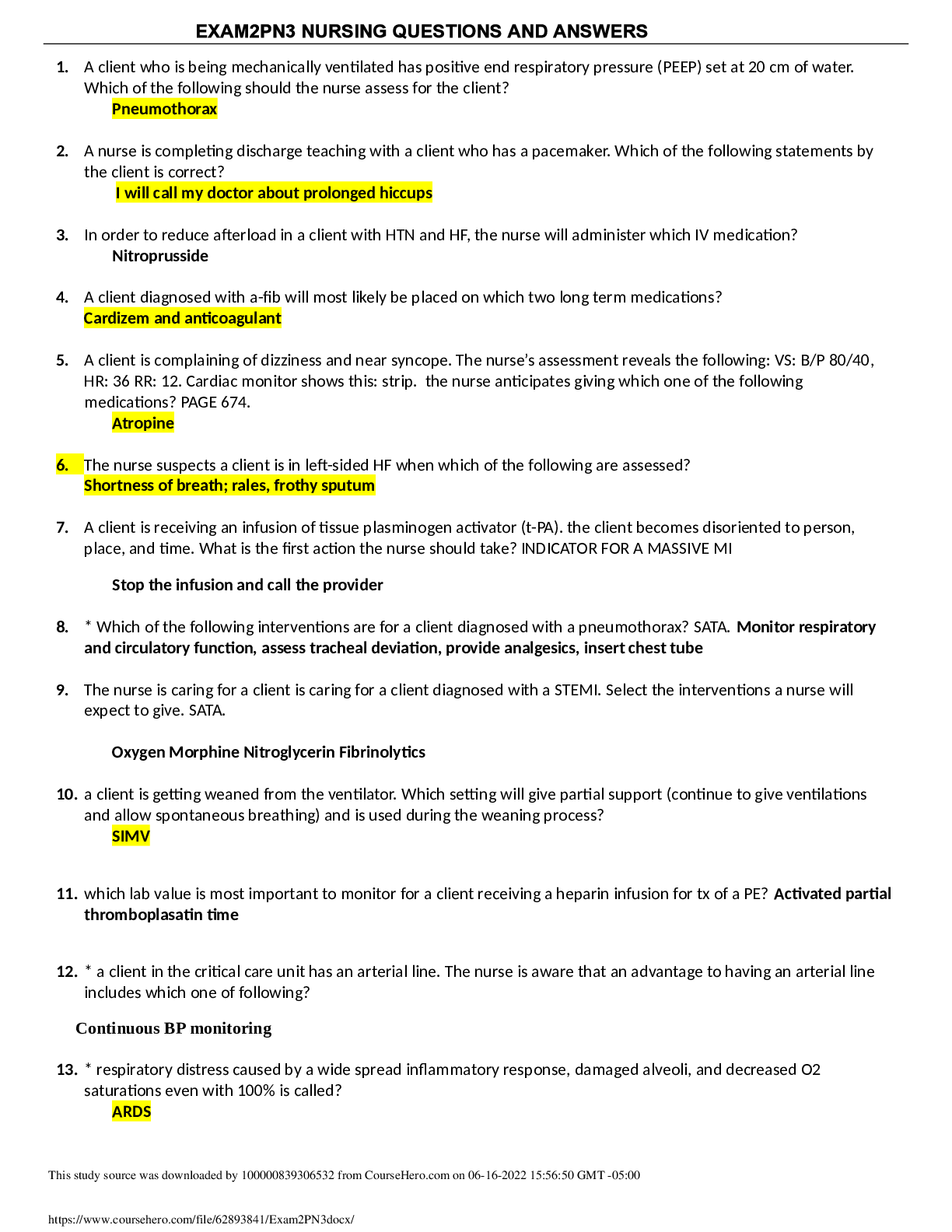
Reviews( 0 )
Document information
Connected school, study & course
About the document
Uploaded On
Sep 19, 2021
Number of pages
4
Written in
Additional information
This document has been written for:
Uploaded
Sep 19, 2021
Downloads
0
Views
40


.png)
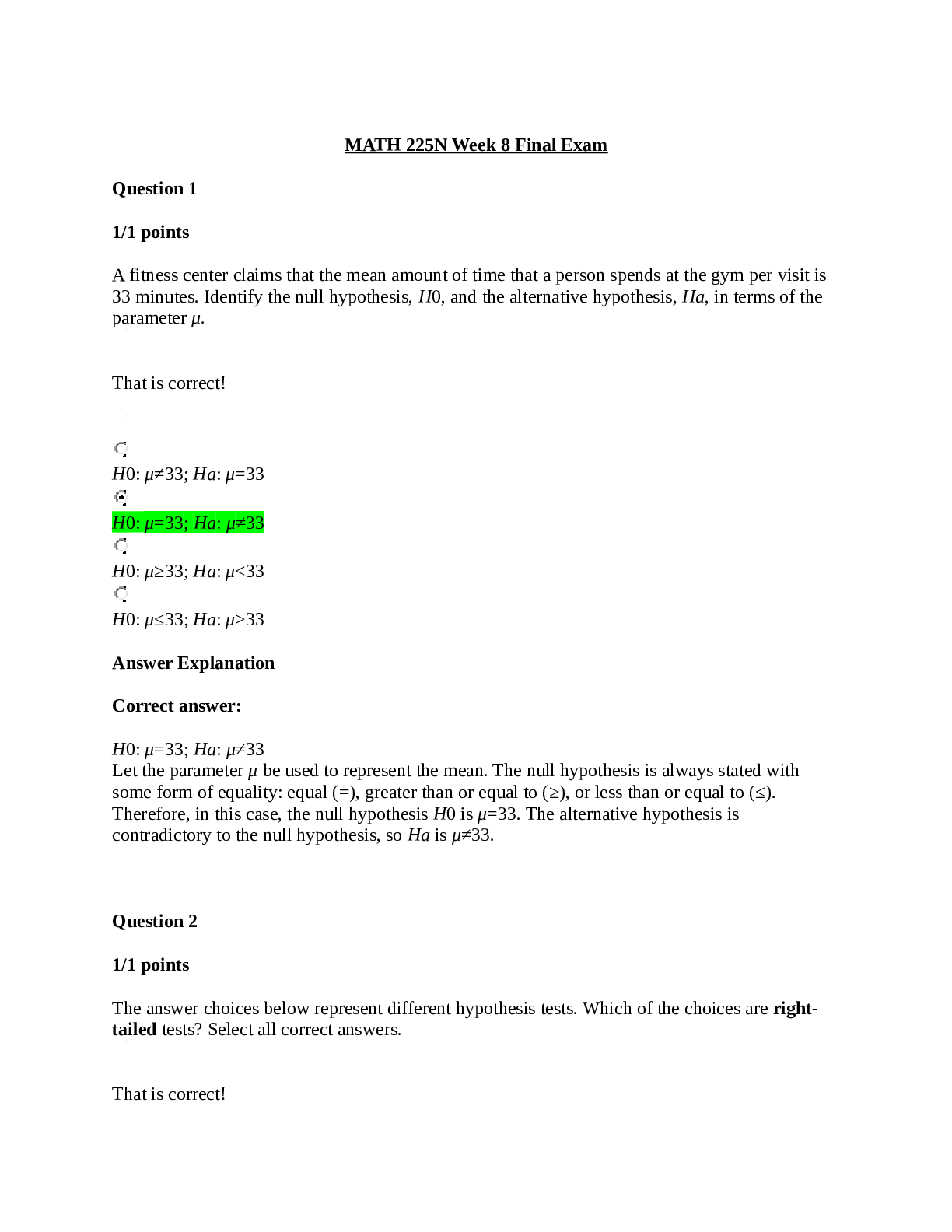
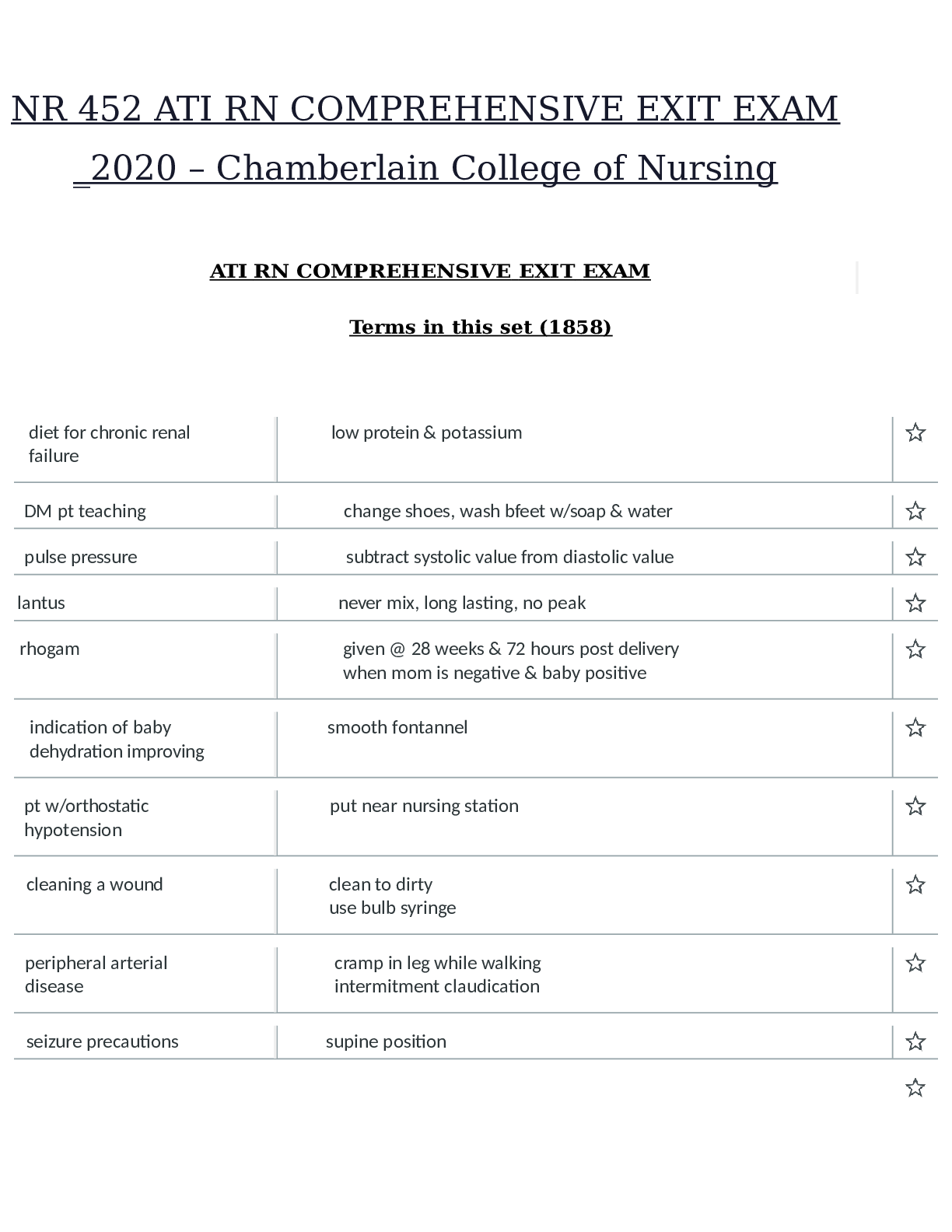
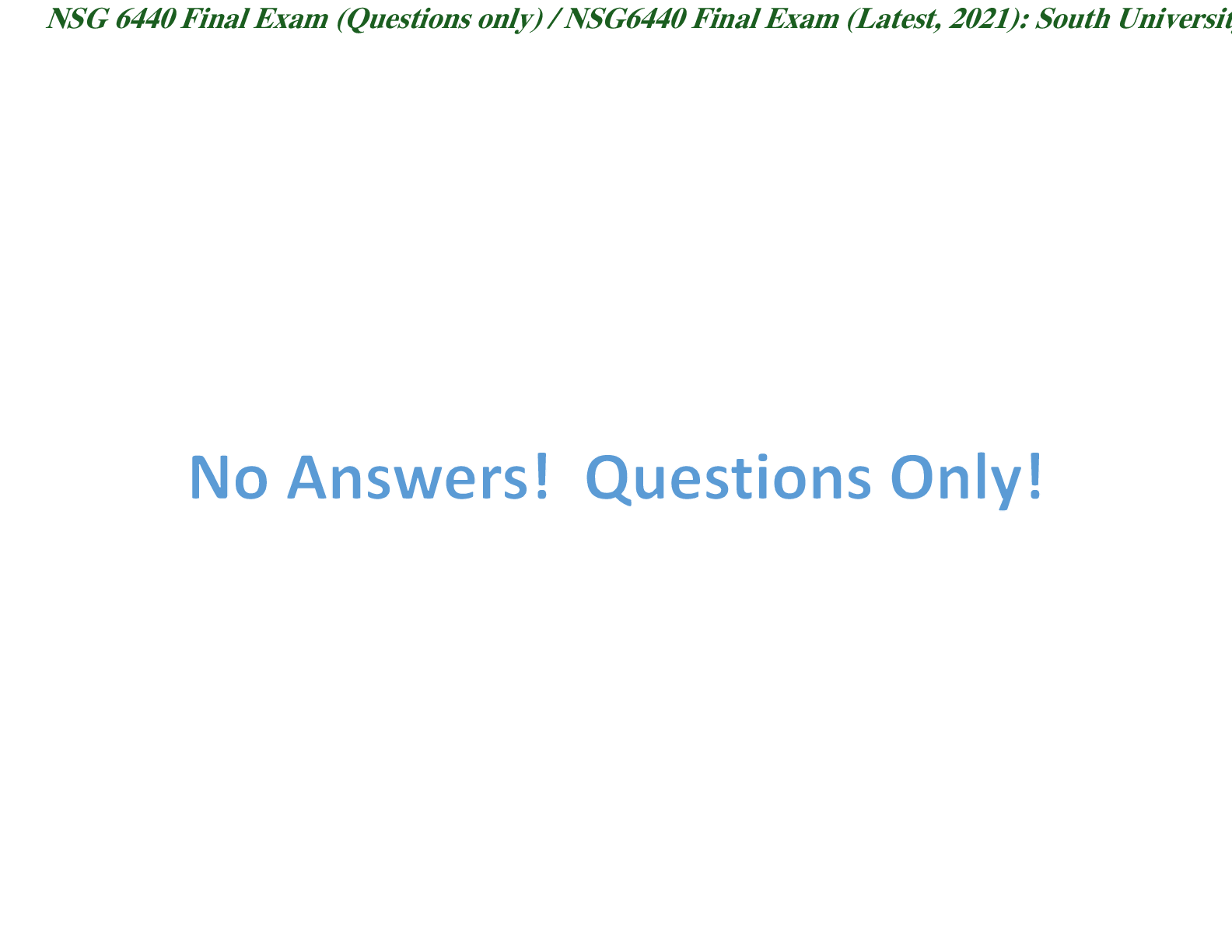

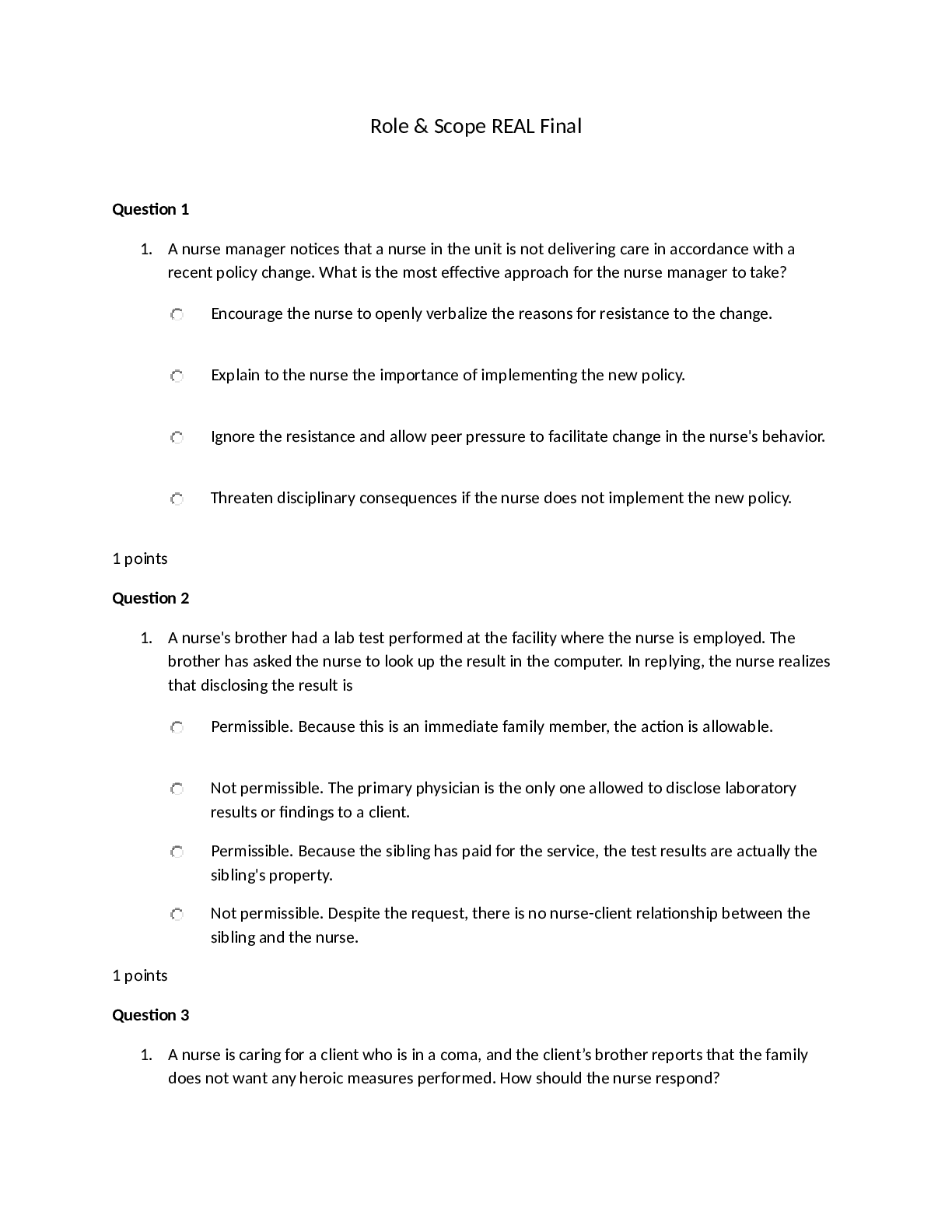
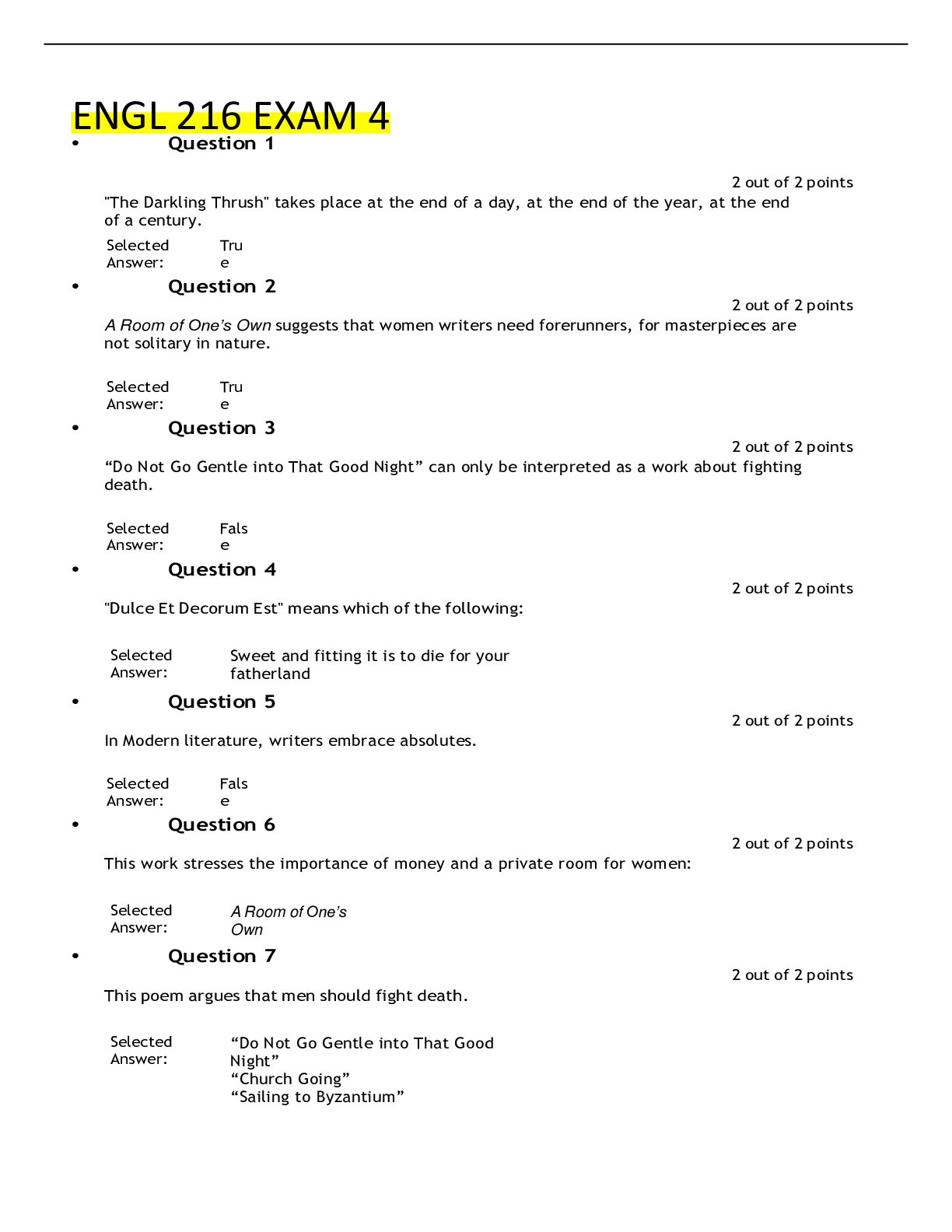
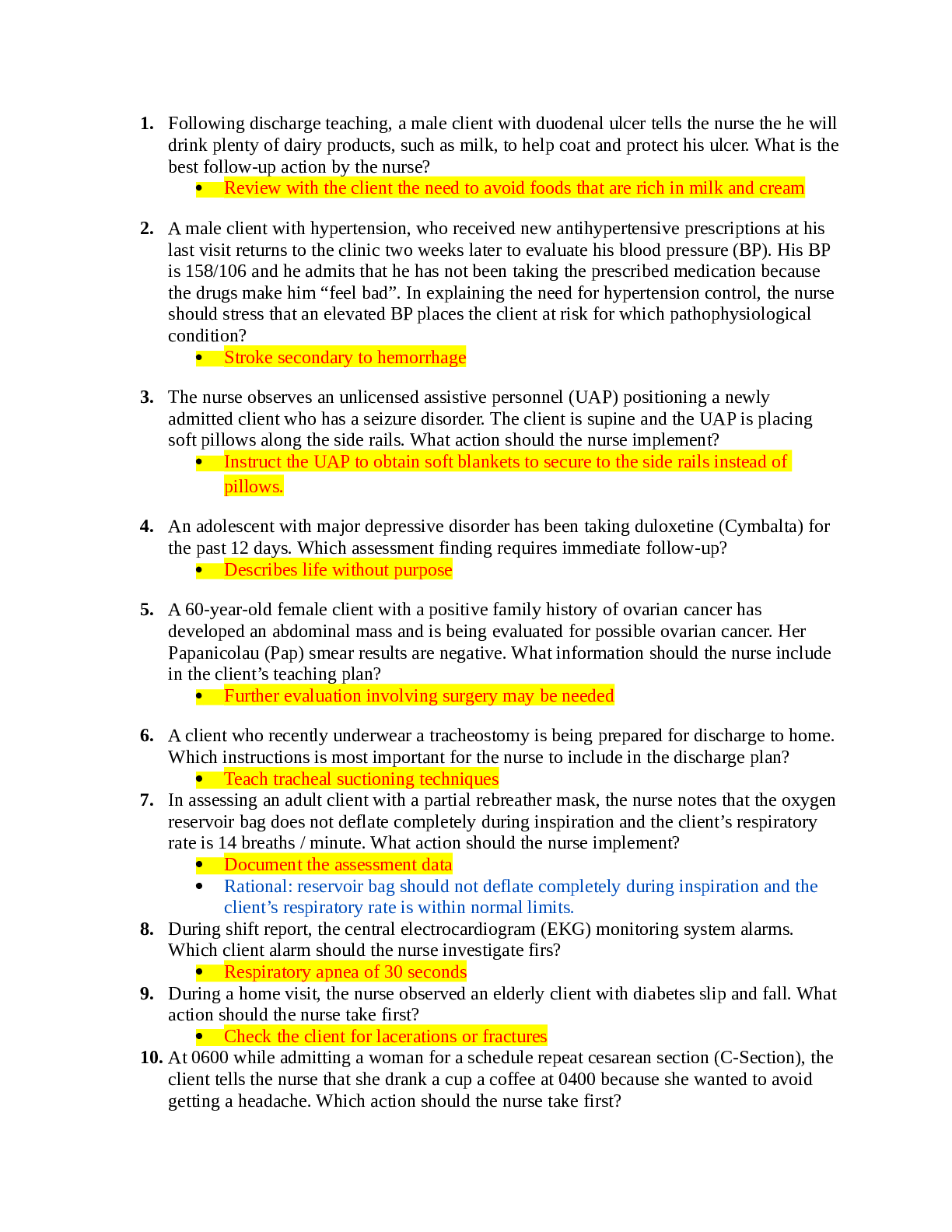

.png)
.png)



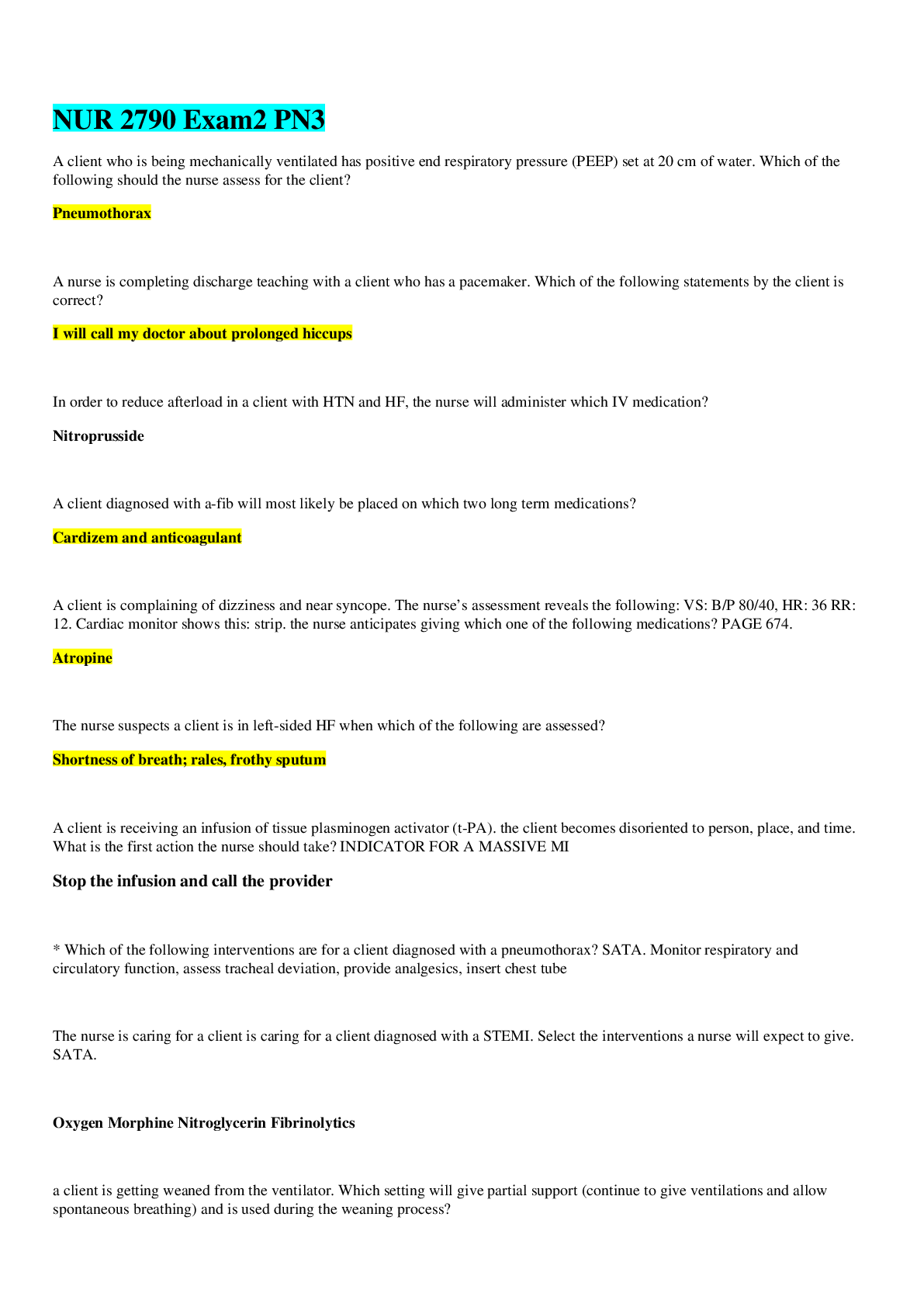
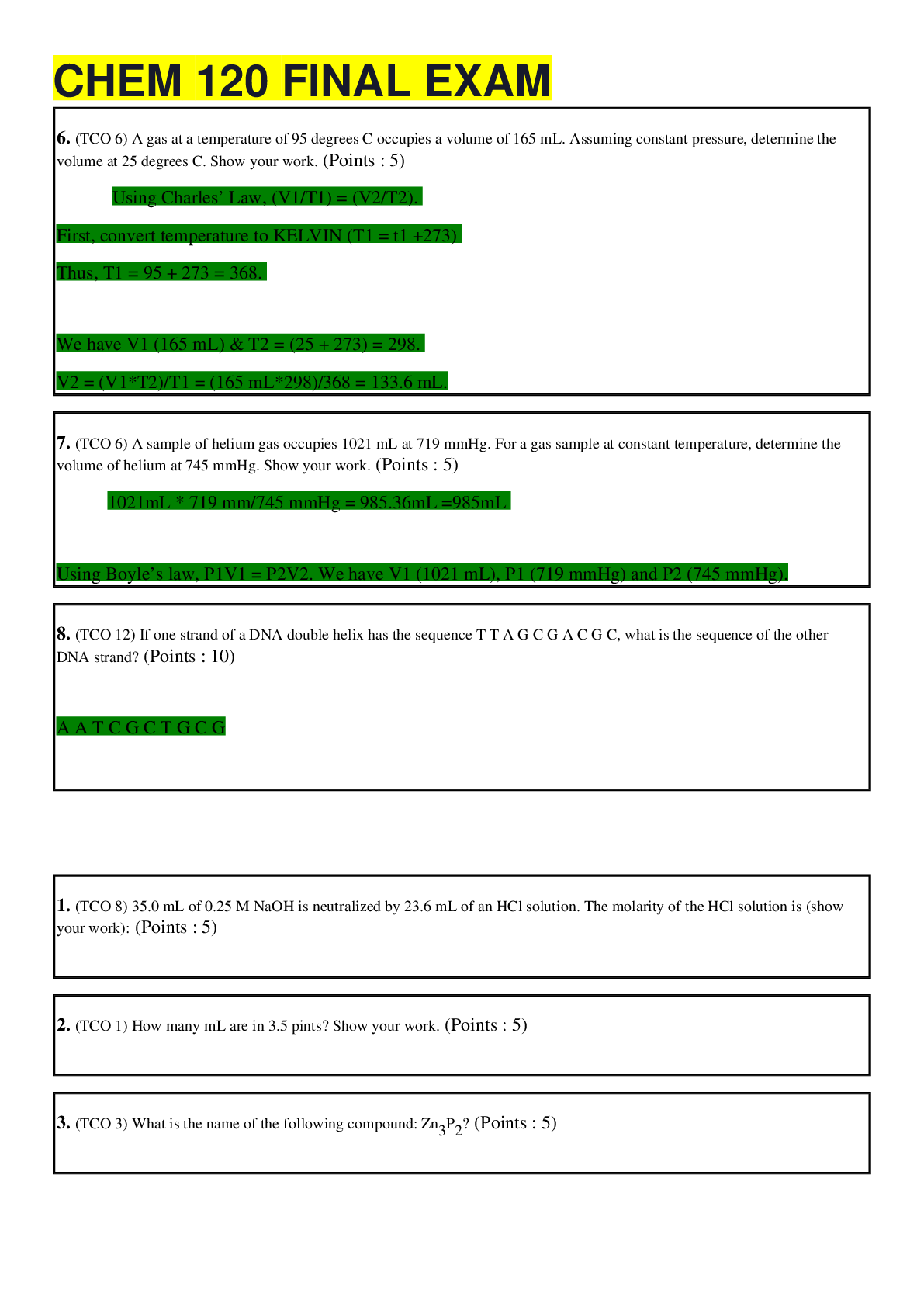
.png)
